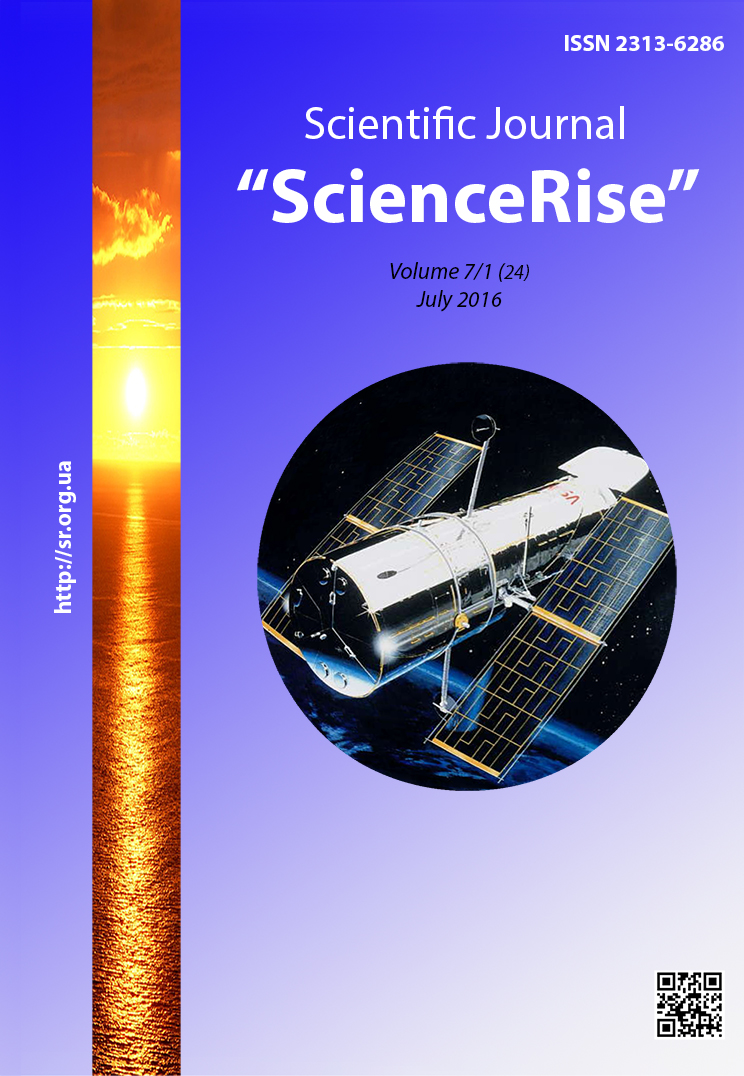Quantitative assessment of intensity of summer atmospheric fronts over Ukraine
DOI:
https://doi.org/10.15587/2313-8416.2016.73923Keywords:
atmospheric front, hazardous phenomena, baroclinic zone, intensity of rainfall, cycloneAbstract
When forecasting the weather the main attention is paid to the hazardous phenomena and natural disasters which are often caused by passing of atmospheric fronts. Therefore it is important to determine the most intensive frontal zones where deterioration in weather conditions is the most probable. As the fronts are connected with baroclinic zones therefore in order to assess their intensity the Y parameter, the quantity characteristic of baroclinicity of the lower half of the troposphere, is used
References
Shakina, N. P., Skriptunova, E. N. (2006). Spektr povtoryaemosti osadkov na territorii Evropeyskoy chasti byivshego SSSR v zavisimosti ot intensivnosti frontalnyih zon i konvektivnoy neustoychivosti setochnogo masshtaba. Meteorologiya i gidrologiya, 4, 5–18.
Huber-Pock, F., Kress, C. (1989). An operational model of objective frontal analysis based on ECMWF products. Meteorology and Atmospheric Physics, 40 (4), 170–180. doi: 10.1007/bf01032457
Sawyer, J. S. (1998). The vertical circulation at meteorological fronts and its relation to frontogenesis. Proc. Roy. Soc., 234, 17–55.
Yusupov, Yu. I. (2008). K voprosu ob operativnom prognoze shkvalov. Tr. GMTs RF, 342, 55–78.
Shakina, N. P. (2013). Lektsii po dinamicheskoy meteorologii. Moscow: «Triada LTD», 160.
Ivus, H. P., Zubkovych, S. O., Khomenko, H. V., Koval'kov, I. A. (2014). Umovy utvorennia zon nebezpechnoho vitru na terytorii Ukrainy. Visnyk ODEKU, 18, 48–55.
Semenova, I. G., Ivus, G. P. (2011). Ispolzovanie termicheskogo frontalnogo parametra dlya modelirovaniya baroklinnyih zon v protsessah tsiklogeneza. Naukovi pratsi UkrNDGMI, 251, 56–71.
Shakina, N. P., Skriptunova, E. N., Ivanova, A. R. (2000). Ob'ektivnyiy analiz atmosfernyih frontov i otsenka ego effektivnosti. Meteorologiya i gidrologiya, 7, 5–16.
Balabuh, V. A.; Osadchiy, V. I. (Ed.) (2011). Mezhgodovaya izmenchivost intensivnosti konvektsii v Ukraine. Globalnyie i regionalnyie izmeneniya klimata. Kyiv: Nika-Tsentr, 150–159.
Shakina, N. P., Skriptunova, E. N., Ivanova, A. R., Kalugina, G. Yu. (1998). Sub'ektivnyiy i ob'ektivnyiy analizyi atmosfernyih frontov. II Ob'ektivnoe vyidelenie zon frontov. Meteorologiya i gidrologiya, 8, 5–15.
Downloads
Published
Issue
Section
License
Copyright (c) 2016 Галина Петрівна Івус, Галина Василівна Хоменко, Наталія Михайлівна Міщенко, Неля Ігорівна Косолапова, Олександр Олексійович Сухов

This work is licensed under a Creative Commons Attribution 4.0 International License.
Our journal abides by the Creative Commons CC BY copyright rights and permissions for open access journals.
Authors, who are published in this journal, agree to the following conditions:
1. The authors reserve the right to authorship of the work and pass the first publication right of this work to the journal under the terms of a Creative Commons CC BY, which allows others to freely distribute the published research with the obligatory reference to the authors of the original work and the first publication of the work in this journal.
2. The authors have the right to conclude separate supplement agreements that relate to non-exclusive work distribution in the form in which it has been published by the journal (for example, to upload the work to the online storage of the journal or publish it as part of a monograph), provided that the reference to the first publication of the work in this journal is included.

